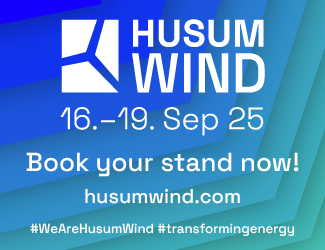There is a new challenge emerging and it’s all about data. Specifically about the ownership of and access to data between the owners of assets – such as ship operators, rig owners, shipyards and power stations – and the manufacturers who provide the equipment
For many years manufacturers and industrial automation providers have built assets – the engines that drive the ships, cranes and power[ds_preview] stations, the pumps that operate in various scenarios and indeed much of the equipment to be found across the industry – with sensors which provide them with data on how the asset is operating.
All of these assets are pumping out many terabytes of data that they collect and use to drive additional insight on the equipment they provide. This also enables them to offer additional services, such as maintenance, to the asset owners or operators. For example, crane manufacturers offer »Lifting as a service« and engine manufacturers offer »Power as a service«. This means asset owners no longer just buy an engine or a crane, they also buy a service that runs for an agreed term, removing much of the headache they would have in maintaining and managing this equipment on a daily basis themselves.
This is great, but when owners themselves are looking to access the data their assets are generating, in order to derive insight to enhance their operation, we are seeing challenges arise.
A customer will typically be engaged with a number of vendors, not just for different types of equipment, but also within each category. For example there might be five different engine manufacturers who are all gathering data to provide their own maintenance services. Additionally when manufacturers and automation providers are not joined up from a data perspective, the owner is only able to get a view of the actual asset or assets provided by that particular manufacturer. But in order to get an end to end view of the operation of an asset, or number of assets, data will need to be acquired from a number of sources depending on the equipment used, and this equipment may be provided by other manufacturers.
And when asset owners do get the data, they need to find somewhere to store it as well as someone to help them derive the insight they need. While this is generally within the capability of larger enterprises, many small to medium enterprises will find this a struggle to do themselves.
What customers need is an environment where all data sources can co-exist and be made available to them as the asset owner to interrogate. This means the customer can benefit from an end to end systems view of the asset or group of assets, rather than a siloed component or single asset view, enabling them to create insight that is of direct benefit. Furthermore it’s important to work with a vendor they can trust, one who is independent and always keeps data ownership in customer hands.
Lloyd’s Register provides just this environment. Its Connected Assets solution is able to consume, aggregate and orchestrate data from multiple sources so that customers have one consolidated version of the data truth – and from there apply analytics to derive the deepest insight. LR’s solution can be in located in any environment, be it a secure public cloud, private cloud or indeed on-site, depending on customer requirements. LR also prides itself on being truly independent, meaning it can act as a data arbitrator for both customers, manufacturers, and industrial automation providers alike. Because we only use data for the benefit of the customer, data ownership is always kept in customer hands.
Finally, because we have over 250 years of experience in marine, offshore and oil and gas, we bring deep industry insight which ultimately is the key ingredient to really driving significant operational gains.
David Ryder















